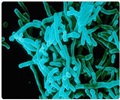World Health Organization (WHO) sponsors the World Health Day celebration on April 7th each year to turn global focus on health - related issues. WHO’s theme for World Health day 2009 is “Save Lives. Make hospitals safe in emergencies.”
When natural disasters like tsunami, earthquakes, cyclones, tornadoes and floods strike, the affected population in the region rushes to health facilities for immediate medical help. Most often it happens that some of the health facilities are destroyed when disaster strikes and become unavailable when they are needed most.Recent Disaster-struck Health facilities
• 30 of the 240 health centers were destroyed and 77 seriously damaged in Aceh, Indonesia when the tsunami struck the province in December 26, 2004
• 3812 health facilities were destroyed in Gujarat, India by a massive earthquake in 2001 that measured 7.7 in the Richter scale
• 89 damaged hospitals and health facilities in Central and Southern Philippines left disaster victims stranded after the 2008 Typhoon Fengshen
• 52% of health care centers were seriously affected in China’s Wenchuan earthquake in 2008, with major infrastructural loss
• 61 health facilities were damaged or destroyed in August 2008 when Typhoon Kammuri flooded 5 provinces in Vietnam
• In January 2009, copious rains flooded Fiji hospitals and health centers. Water pipes and sewage lines broke down posing serious health hazards.
WHO Guidelines
This year’s World Health Day theme is an extension of the biennial World Disaster Reduction Campaign (2008-2009) “Hospitals Safe from Disasters: Reduce Risk, Protect Health Facilities, Save Lives.” The combined effort of WHO, the UN International Strategy for Disaster Reduction (ISDR) and the World Bank, hopes to enable health facilities to brave the onslaught of disasters and meet the demands of medical emergencies.
To gear up health facilities, medical and para medical services for disaster management the following steps should be implemented:
• Existing technologies should ensure the structural resilience of hospital buildings
• Keep the equipment and medical supplies intact for an emergency
• Improve the level of preparedness and risk reduction capacity of health workers
• Involve communities in order to make the campaign a success
Critical Lifelines Challenged in Emergencies
Health facilities with medical and paramedical staff are critical lifelines, especially in the aftermath of disasters—Their role in treating injuries, helping people deal with the trauma and caring for people’s health needs is invincible. Among the casualties in disasters and emergencies—natural or man-made (as in wars and terrorist attacks)-- are health services, mainly health workers. For example, when rain waters flooded Fiji hospitals this year, supplies for blood and laboratory reagents were limited and floodwaters threatened to damage costly medical equipments. Health workers worked for extended hours to meet healthcare emergencies.
Responsible for primary healthcare in communities, health centers meet everyday needs like outpatient services, childbirth services, chronic disease care and immunizations that need to go on even during times of emergency. Health care services are dispensed in specialized hospitals and tertiary hospitals as well as primary health centers and local clinics. So it is important that all these health facilities are adequately equipped to deal with emergencies.
United Front to Deal with Disasters
This year’s World Health Day theme intends to give the necessary momentum required to help incorporate disaster risk reduction into health sector initiatives. This calls for a plan on a grand scale and the WHO along with its global partners will use the day to focus on collaborating with governments, NGOs, communities and individuals to build and sustain efforts to safeguard the normal functioning of health facilities during disasters and emergencies. The health sector needs to co ordinate with civic planners, architects and engineers to put its plan into action.
Health and Fitness for All
In developing and under-developed countries World Health day generally provides a platform for health professionals and non-governmental organizations (NGOs) to explore opportunities to support community development projects like establishment of safe drinking water, sanitation facilities, free medical check-up and vaccination drive against infectious diseases.
Communities around the world committed to creating awareness in health, fitness and well being, will come together on World Health day to organize seminars and workshops and renew their commitment to health through interactive sessions in aerobics, yoga, fitness training and exercise, nutrition and diet. The WHO observation on health puts the matter in a nutshell:
“Health is a state of complete physical, mental and social well being, and not merely the absence of disease or infirmity.” - WHO, 1948.
Source-Medindia
Thilaka Ravi/L










